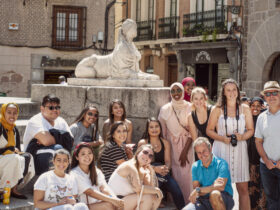The oil painting tutorial is the easiest and most efficient way of creating beautiful masterpieces. This video uses basic techniques to create a portrait from scratch. You will learn how to paint a picture using a variety of styles and how to make real results.
If you’re interested in getting into portrait painting, but don’t want to spend thousands of dollars, then you’re in luck! In this tutorial, I show you how to paint portraits for less than $50.
This oil painting tutorial is the perfect introduction to portrait painting. It includes everything you need to get started.
While some people may think that portrait painting requires thousands of dollars worth of supplies, the reality is that you only need a few things to get started.
In this painting tutorial, I share the basics of oil portrait painting, including what paints to use, brushes, canvas, and more.
When people learn to paint, they often think about expensive art materials. Or perhaps they think of taking classes that require years of training. But as far as painting goes, it doesn’t have to cost anything, and you don’t need years of experience. The truth is, anyone can learn how to paint portraits using oil paint. There are many benefits to doing so.

What is an oil painting
An oil painting is a painting done in oil. It’s made from oil mixed with pigment and applied on canvas, paper, or wood.
In this tutorial, we’ll learn how to make a portrait of a person or animal.
How to paint a portrait
Step 1: Get the paint ready
You will need the following materials:
• Paintbrushes
• Acrylic paint
• Paper towels
• Brushes
• Paper palette
• Palette knife
• Plastic cup
• Water
• Eraser
• A good pair of gloves
• An artist’s mask
• A flat surface for your canvas
• A clean, smooth surface for your canvas
• A paper towel to absorb excess water from your brushes
• An easel
• A large sheet of clean, smooth paper
• A soft, clean rag
• A container for your paints
Step 2: Prepare your canvas.
Prepare your canvas by laying it on your easel and setting up your palette on a nearby table.
Step 3: Set up your palette
Place your paper towels on your palette, and lay your knife on the edge, ensuring it is parallel to the bottom of the palette.
Step 4: Mix the paints
Pour all of your paints into the palette. Use a palette knife to mix the colors.
Step 5: Start mixing your colors.
You can start mixing your colors by adding one color to another. For example, if you have a red, blue, and yellow mixture, add a bit of yellow to the blue and get green.
Step 6: Mixing your colors
Add a little bit of each color to get the color you want.
Step 7: Add a few drops of water
Mix the paints with a small amount of water to help the pigments blend and prevent the colors from separating.
How to paint a portrait realistically
Painting a realistic portrait is not easy. Many variables can make or break the final product.
Plenty of artists do a great job of painting realistic portraits, but they all have one thing in common; they spend years learning from others.
While this is a great way to learn, the best way to learn is to study yourself. Start by sketching your face, then experiment with different mediums.
I suggest using oils, acrylics, and pastels. If you decide to use oils, I recommend a thicker consistency. This will help you create a more authentic look.
While I’m not a professional artist, I do enjoy painting. That’s why I decided to create this tutorial. I wanted to share what I know and have learned over the years.
What tools are needed for painting a portrait
Before you can get started, you need some equipment. Most importantly, it would help if you had a canvas.
There are a variety of canvases available on Amazon. Here are a few of the best:
1. 8×10 Canvas
You can find a variety of 8×10 canvases on Amazon. These are typically sold at a lower price than other sizes. The most important thing to consider is that they must be at least 5mm thick.
2. 10×10 Canvas
A 10×10 canvas can be slightly more expensive than a standard 8×10 canvas. However, the increased size can be worth the cost if you plan on painting larger works.
3. 12×16 Canvas
12×16 canvases are the most popular size among professional painters. They can be slightly more expensive than a standard canvas, but they are still cheap enough for the average artist.
4. 14×20 Canvas
A 14×20 canvas is an extremely large canvas that can be used to paint very large portraits. This is the largest size available on Amazon.
5. 16×24 Canvas
An even bigger canvas is 16×24. This is the size of a small wall. While it can be used to paint large portraits, it is not recommended for beginners.
6. 18×24 Canvas
Finally, a large, wide canvas is ideal for painting large, elaborate portraits. This is the size of a small wall.
Frequently asked questions About the Tutorial.
Q: Can painting portraits be painted without an actual human subject?
A: If you take good care of your oil paints and learn how to use them. I use acrylics, but the same techniques can be used with oils. You must be very careful to apply the paint thin enough, so it won’t soak into the canvas.
Q: How long does it take to paint a portrait?
A: Usually, a portrait will take a week to paint. I like to give the portrait plenty of time to dry so it will not crack.
Q: What are some things that are important when painting a portrait?
A: I usually start by sketching my subject’s faces and hands. Then I try to block in their hair and clothes. Next, I try to stop in their features. This step is very important.
Top Myths about Tutorial
1. It isn’t easy to learn portrait painting.
2. The best way to learn portrait painting is to copy a good painting.
3. I have to spend years learning portrait painting before I can paint anything worthwhile.
4. Portrait Painting in Oil Tutorial is expensive.
5. Portrait Painting in Oil Tutorial requires advanced skills.
Conclusion
There are two schools of thought regarding learning how to paint. One school is that the world is full of talented artists that have been painting since childhood and will continue to do so for the rest of their lives.
The other school of thought is that the world has changed so much over the last few decades that it is now very difficult to teach someone how to paint without having access to a wide range of materials and supplies.
There is some truth to both of these arguments. A huge amount of talent is available in the art world, and there is a massive demand for skilled artists in many sectors.
However, at the same time, we live in a time where technology has made learning how to do just about anything easy.














